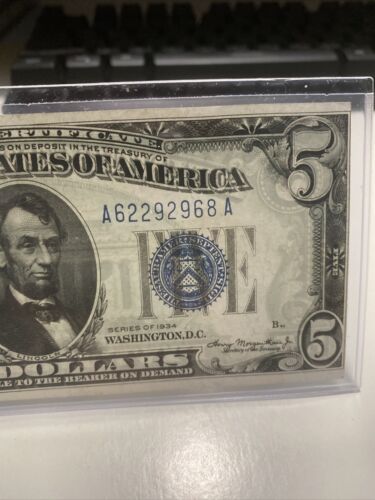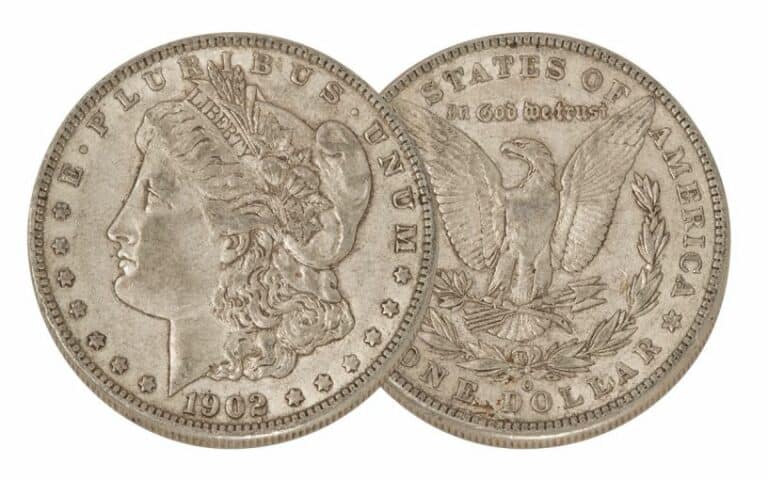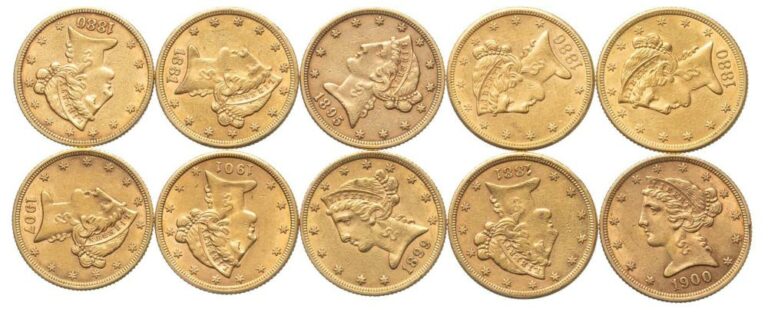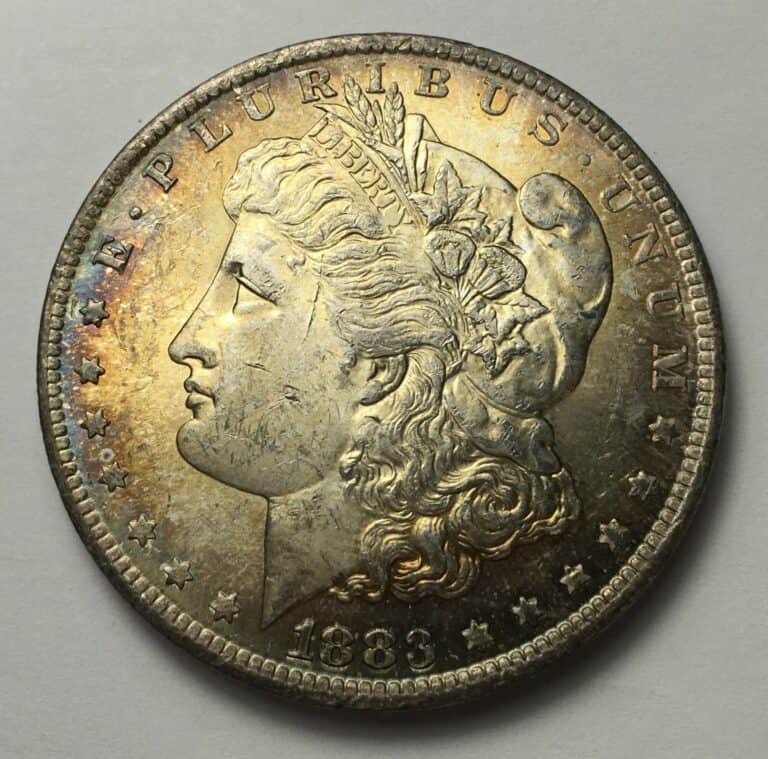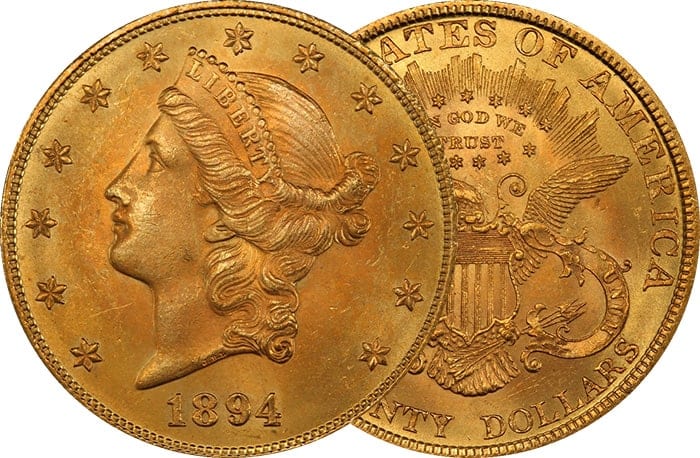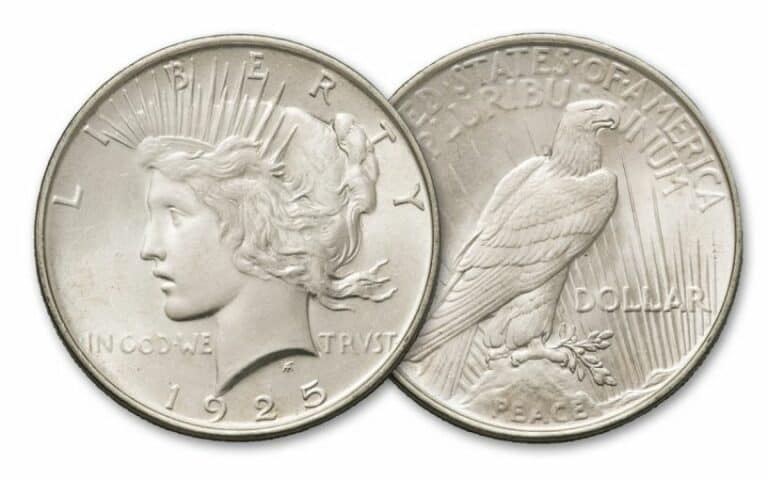1934 $5 Dollar Bill Value: How Much Is It Worth Today?
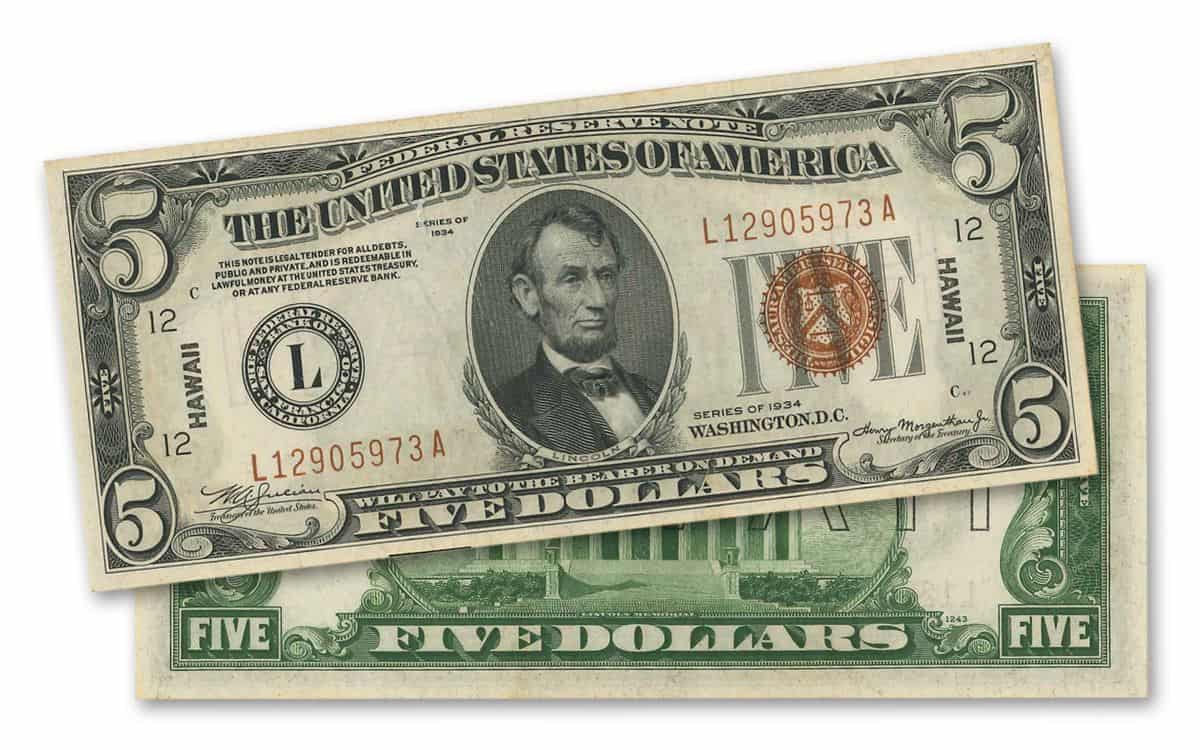
In 1934, the Bureau of Engraving and Printing issued several $5 bills with different seals. The blue seal notes were recognized as silver certificates, the yellow seal notes were printed for the North African region, and five different $5 reserve notes were introduced with the green seal. The brown seal was used for two notes printed for the Hawaiian region.
In this post, we’ve gathered information regarding the 1934 $5 bill, its value, and the different varieties you can find in the market.
1934 $5 Dollar Bill Value Chart |
|||
| Series | Uncirculated | Circulated | Star Bills |
| 1934 $5 bill blue seal | $45 | $5 to $15 | $85 to $425 |
| 1934 $5 A blue seal | $25 to $35 | $7 to $12 | $200 to $300 |
| 1934 $5 B Blue seal | $45 | $5 to $15 | $175 to $575 |
| 1934 $5 C blue seal | $40 to $50 | $10 to $12 | $150 to $250 |
| 1934 $5 D blue seal | $25 | $8 to $10 | $75 |
| 1934 $5 A to D green seal | $30 to $50 | $5 to $12 | $125 to $225 |
| 1934 $5 A Hawaii Brown seal | $250 | $30 to $60 | $2000 to $6000 |
| 1934 $5 A North Africa yellow seal | $250 | $10 to $30 | $500 |
While the earliest $5 silver certificates were printed in 1886, the 1934 certificates were printed in five series and had two types. One type was the regular $5 silver certificate, whereas the others were certificates specifically printed during wartime.
These regular five series have a blue seal. Likewise, the 1934 A $5 bill used a yellow seal. Using different seals prevented enemies from stocking large quantities of the currency. Federal Reserve notes with the green seal were also printed in 1934. Lastly, the Hawaii federal reserve notes, which used a brown seal, were printed specifically during wartime.
1934 A $5 Yellow Seal North Africa Silver Certificates Value
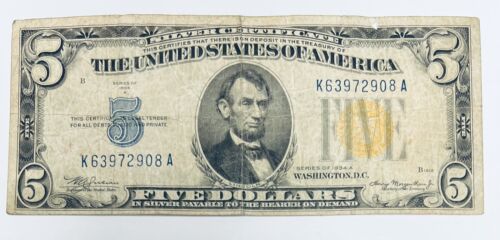
Abraham Lincoln’s portrait is depicted on the bill’s front side. A blue treasury seal and the note’s serial number are written in the same ink. The other serial number is written on the note’s left side, below the bill denomination. The signatures present on the bill’s front also vary with different seals.
The first $5 bills were printed in 1886, whereas the last series was issued in 1953 with blue seals. In today’s market, the 1934 $5 bills are sought after and sold for a decent amount if in excellent condition. As mentioned, these banknotes were printed in several different types and used four colored seals and series to differentiate these varieties.
The back side features a picture of the Lincoln Memorial building at the center of the note. Over the picture, you’ll see the United States of America written in a curved font and the denomination written in block letters on the bottom. Only the Hawaii $5 bills have the word Hawaii printed across the page.
Each $5 bill type from 1934 has a different value. While the star bills are the most valuable, these $5 bills still sell for more than their face value when in worn condition.
The 1934 North African silver certificates have a blue-colored denomination on the note’s left side and a yellow seal on the bill’s right. During World War 2, these banknotes were printed only to be used by American troops stationed in the North African region. The soldiers were paid these banknotes to prevent the Germans from getting hold of the regular reserve notes and the blue seal silver certificates.
Circulated $5 bills with the yellow seal are worth $25 and upwards. However, the uncirculated notes are valued at $250. The notes with a star in their serial number are the most valued and sell for over $500. Surprisingly, the most well-preserved notes are worth $1850 and up.
1934 & 1934 A to D $5 Blue Seal Silver Certificates Value
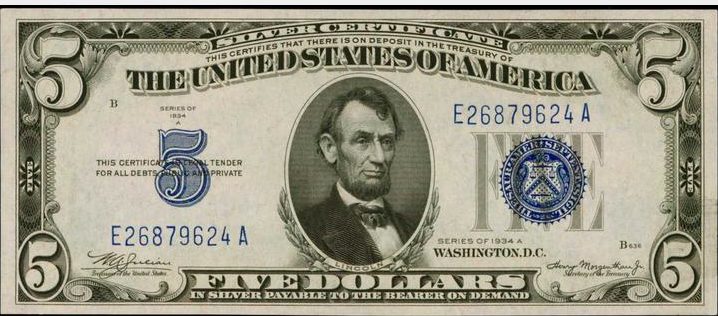
On the 1934 $5 silver certificate bill, you’ll see the blue seal on the right, whereas the number 5 denomination is on the left. The bill’s condition and its series determine the value. These silver certificate variations have a blue seal. As these $5 bills were meant for circulation, the average condition $5 bills sell for $8 to $12.
In contrast, mint condition bills sell for an average rate of $50. The pricey $5 silver certificates are with a star in the serial number. These bills cost between $75 to $350. The MS 63 grade bills are higher and are worth $570 or more.
1934 & 1934 A to D $5 Green Seal Federal Reserve Notes Value
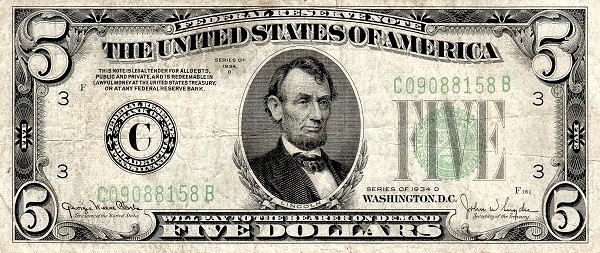
The 1934 $5 federal reserve note has a distinct green-colored toothed seal. There’s also a black seal on the note’s left side. These green seal banknotes came in five series for circulation. Although there are slight visual differences, these banknotes sell for their face value. However, rare and mint condition bills are worth an average rate of $15. Rare bills can sell for $25 to $40, whereas high-grade bills quickly sell for $125 to $225.
1934 $5 Brown Seal Hawaii Federal Reserve Notes Value
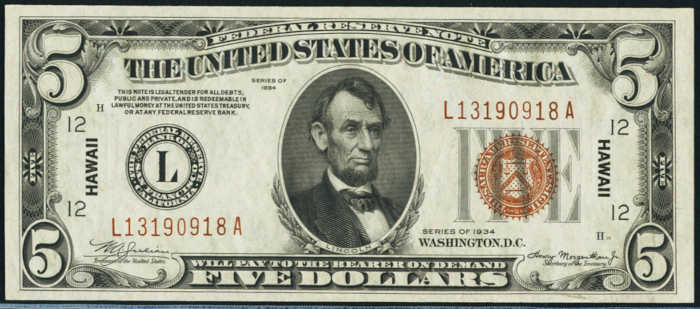
The 1934 Hawaii Federal Reserve $5 bill has a black treasury seal on the left and a brown seal on the bill’s right half. The brown seal positioned on the bill’s right side is the differentiating factor on the bill’s front, whereas the word Hawaii is overprinted on the bill’s back page. These were printed for circulation in Hawaii to prevent the enemy from getting hold of American currency notes.
The notes in mint condition sell for $30 to $50, and preserved bills are valued at $250 and more. The star notes in this variety are valuable and range between $2000 to $6000. While most people think their blue seal 1934 banknotes might have some value, these notes are the most common and can be easily found for a few dollars in the market.
The rare $5 1934 bills are the 1934 B, 1934 B star, and the 1934 A North Africa banknotes. The bills from these varieties having unique and exciting serial number combinations are the most valued. Similarly, the 1934 $5 bills circulated in Hawaii are valuable and rare.
These different variations were only created to address the tension between countries fighting in the war. Although the World War had not started yet, the global changes signaled an upcoming war. The notes with brown and yellow seals were specifically printed to pay troops stationed in Hawaii and North Africa. These yellow and brown seal notes are the most valuable and sought-after among all the 1934 $5 varieties.
1934 $5 Dollar Bill Grading
Similar to coin grading, bill grading services evaluate the note’s condition and assign a value. Due to the different note variations, there isn’t a comprehensive video explaining the different grades. Here’s a video with some introductory explanation on the four types of blue seal 1934 $5 bills.
1934 $5 Dollar Bill Error Lists
No matter what the year, several banknotes are still prone to error. Even the most negligible errors can increase the value of your 1934 $5 bill. Here’s a list of the most common errors in the $5 bill from 1934.
1934 $5 Dollar Bill Overprints Error
If the serial number printing die hits the same banknote twice, it results in overprints. Similar to serial numbers, seals and other information can be overprinted, resulting in an overprinting error.
1934 $5 Dollar Bill Serial Numbers Inverted Error
Sometimes, the serial number printing die is placed at the wrong angle, making the serial numbers appear inverted.
1934 $5 Dollar Bill Miscut/Uncut Error
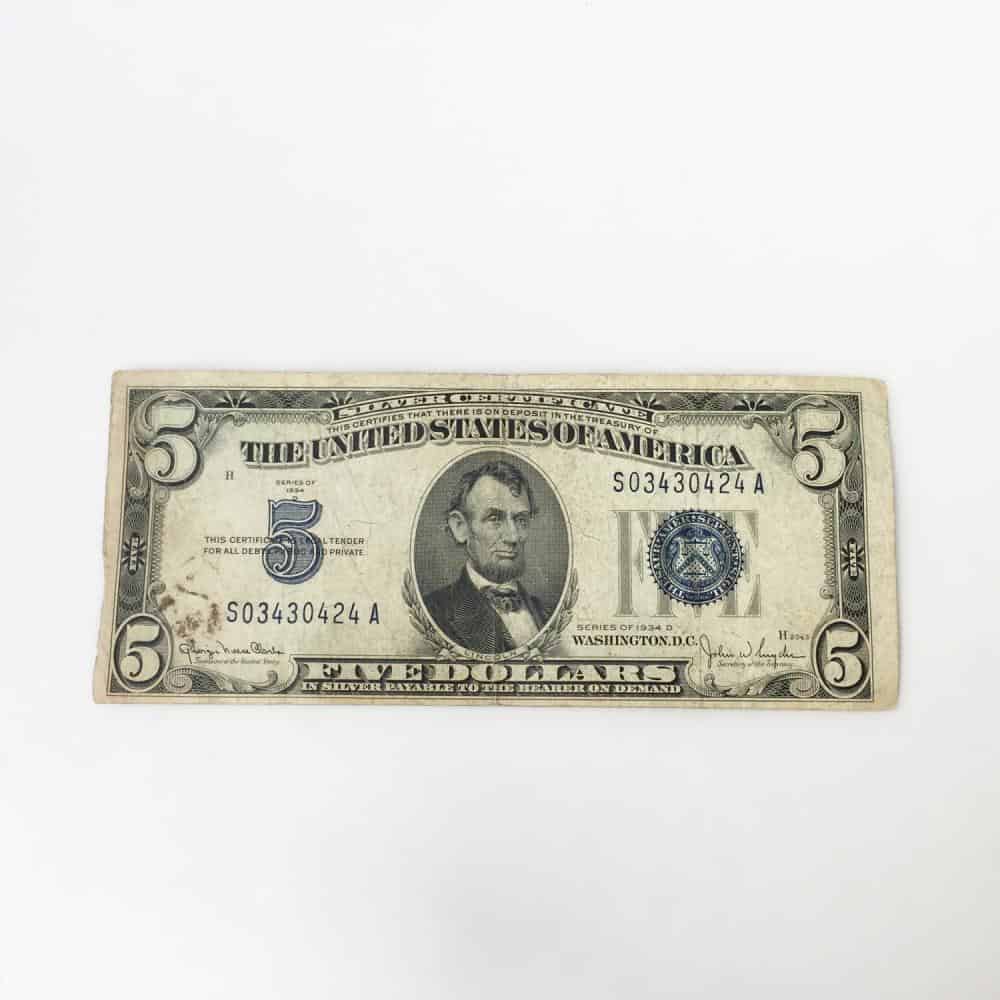
Miscut bills formed after placing the printed currency sheets at the wrong angle on the cutter, creating uneven edges. Uncut sheets can form a wrinkle in the printed banknote.
1934 $5 Dollar Bill Off-center Error
Off-center imprints are standard and occur when the printing die is misaligned.
1934 $5 Dollar Bill FAQs
What’s a 1934 $5 bill with a blue seal worth?
A 1934 $5 bill with a blue seal is valued at an average price of $7 to $12. These blue seal notes are silver certificates and differ from the green seal federal reserve bank notes. The blue seal notes with particular serial numbers and unique errors can still sell for hundreds or thousands of dollars.
What is so special about the 1934 $5 dollar bill?
Besides printing thirteen variations in the same year, the 1934 $5 bill has historical value. These bills were printed in different variations to limit the access of the Germans to American currency, especially in hotspots like Hawaii and North Africa.
Why did the blue seal $5 bills carry a silver certificate label?
These bills were redeemable for the same value as silver or gold. These silver certificates were widely used and recognized during the Great Depression period and could be exchanged for one of the available precious metals.
Why was the North African variety of the 1934 $5 bill introduced?
The authorities wanted the American currency to stay in the hands of their citizens. Therefore, they printed several $5 bills for Hawaii and the North African region. The reason for printing these bills was to avoid the regular banknotes getting into the hands of enemies.
During the time before the war, the army stationed at different regions in defense of their homeland was paid in cash. Therefore, huge quantities of cash had to be printed for the troops stationed in North Africa and Hawaii. The North African notes had a yellow seal, whereas the notes printed for Hawaii had a brown seal.
This move was executed, as the authorities believed that if the enemy troops successfully defeated the Americans at these fronts, the federal reserve bank notes that were already in circulation could end up in the hands of enemy countries like Germany or Japan.
Is a 1934 $5 bill worth money?
No matter the variation, the 1934 $5 bill always sells for a few dollars more than its face value. The green seal bill in mint condition is estimated at $20 or higher. The 1934 A bills with an error or having an issue with the serial number can fetch a lot more than the bill’s face value.
How to tell if a $5 bill is valuable
If your $5 bill has its serial number starting with the serial number BA 15, then you’re in luck because bills with this serial combination can fetch a lot of money.
What is a red seal $5 bill?
The red seal $5 notes are poor-quality notes containing stains, tears, folds, writing, or dyes. The red seal $5 notes were circulated at the same time as silver certificates and are a valuable find.
What is the rarest dollar bill?
The ladder bills are the rarest bills, regardless of the year they were printed. The ladder bill refers to a particular serial number seen on the bill. The serial number will start from one and end at eight.
Similarly, a reverse ladder forms when the serial number starts from eight and ends at one. The ratio of printing these bills is one in 96 million. Several other serial number combinations are also quite popular, which include sets of different numbers, short ladder sequences, and repetitive numbers.
